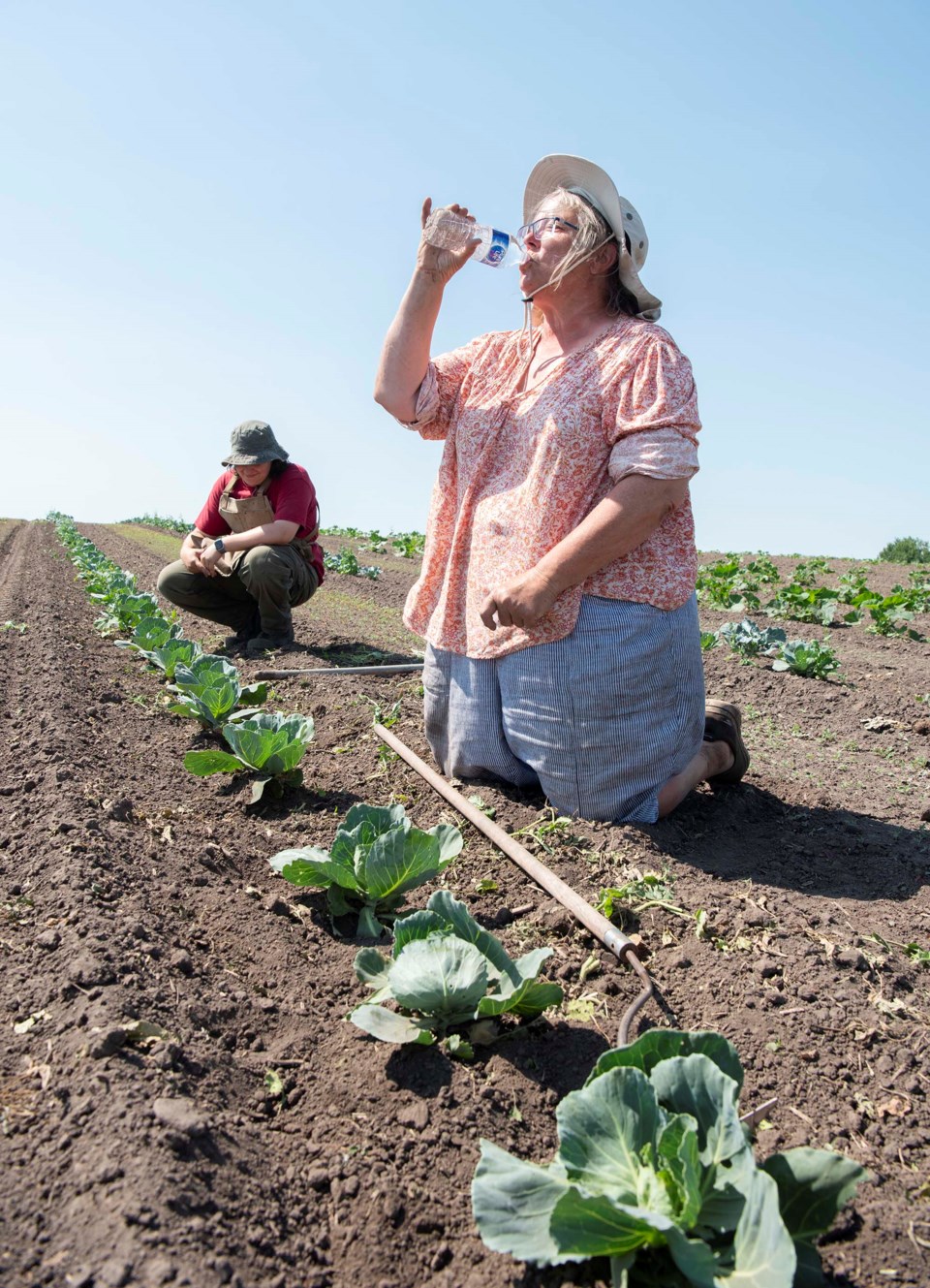How Now Green Cow
How Now Green Cow is examining how our dinners are shaping, and are being shaped by, the climate crisis. Got a food and climate question? Send it to [email protected] so it can be addressed in a future story.
Farmers like Sturgeon County’s Tam Andersen are no strangers to early mornings. But this month, it’s been so hot out there she’s been getting up at 5 a.m. just to avoid the heat.
“It has been a blistering +35ish for the last week running,” she said on July 11 — way above the 20 C highs she’d expect at this time of year.
“I don’t think we ever saw a time when it was plus-high-30s when I first started [farming],” said the farmer of nearly 40 years.
Most of Alberta is baking under extreme heat this month. While some of us can duck into air-conditioned rooms or vehicles, that’s not an option for many farmers working in the fields. That puts them at risk of dehydration, heat stroke, and even death.
Sturgeon County is projected to see 10 times as many heat waves and about 23 times as many extremely hot (+32 C) days a year compared to the historic average by the 2060s, the county’s climate adaptation action plan reports. While farmers are flexible, there’s only so much they can do on their own to beat the heat.
Dangerously hot
Global heating caused by rising greenhouse gas emissions may make for a longer growing season but also brings higher temperatures, notes the Climate Atlas of Canada. Too much heat means dead crops, animals, and farm workers.
Agricultural workers are 35 times more likely to die on the job from heat than workers in other industries, Moussa El Khayat noted in Frontiers in Public Health. Not only do they work physically demanding jobs outdoors, but they often have poor control over workplace safety conditions, such as access to water, shade, and rest breaks.
Many farmers are temporary or migrant workers who fear deportation if they complain about weather-related working conditions, said Hannah Kaya, who is studying the impacts of climate change on farm workers for the National Farmers Union.
“We’re actually hearing stories of farm workers who are reducing their intake of water so they don’t have to go to the bathroom as often and aren’t punished for inefficiency,” she said.
“It creates this context of fear. When you have a pervasive workplace health and safety issue like the climate crisis, that’s a really dangerous dynamic.”
Limits to adaptation
Farmers are already taking steps to guard against extreme heat. Delton Jubinville of Sturgeon County's Farmer Del Meats said he has put up windbreak panels to create shade for his cattle, for example, and shifted more work to the cooler morning and evening hours.
Jubinville said he’s not sure what he’ll do if Alberta starts seeing extreme heat like parts of California are experiencing now.
“This is bearable, but if it got worse, it wouldn’t be.”
Andersen said she and the crew at Prairie Gardens near Bon Accord have switched to working indoors in the afternoons during this recent heat wave, and take big hats, sunscreen, and plenty of water with them when they go into the fields. A hotter future could mean shifting more work to the mornings and planting heat-loving crops like corn instead of broccoli.
But unless you want to pick tomatoes at midnight, there are limits to what farmers can do on their own to adapt to extreme heat, Kaya said.
“We really need comprehensive climate action.”
That means having governments of all levels take serious action to reduce greenhouse gas emissions and the heat they bring, Kaya said. It also means protecting the rights of farm workers to unionize and ensuring they have access to shade, water, and rest breaks. Governments should also give employers financial support to build the infrastructure needed to protect workers; Kaya suggested tapping into some of that money used to subsidize oil and gas.
Kaya called on Alberta to protect farmers from extreme heat by updating its occupational health and safety rules to specifically address hot weather. B.C.’s rules set out heat exposure limits for workers based on standards set by the American Conference of Governmental Industrial Hygienists, for example, and requires employers to provide adequate amounts of cool drinking water for heat-stressed workers.
There’s still time to protect vulnerable workers from the impacts of the climate crisis, Kaya said in a June 2024 NFU media release on farmers, extreme heat, and climate change.
“But if we don’t act soon, I’m worried we won’t have a future where farming is safe and viable.”



